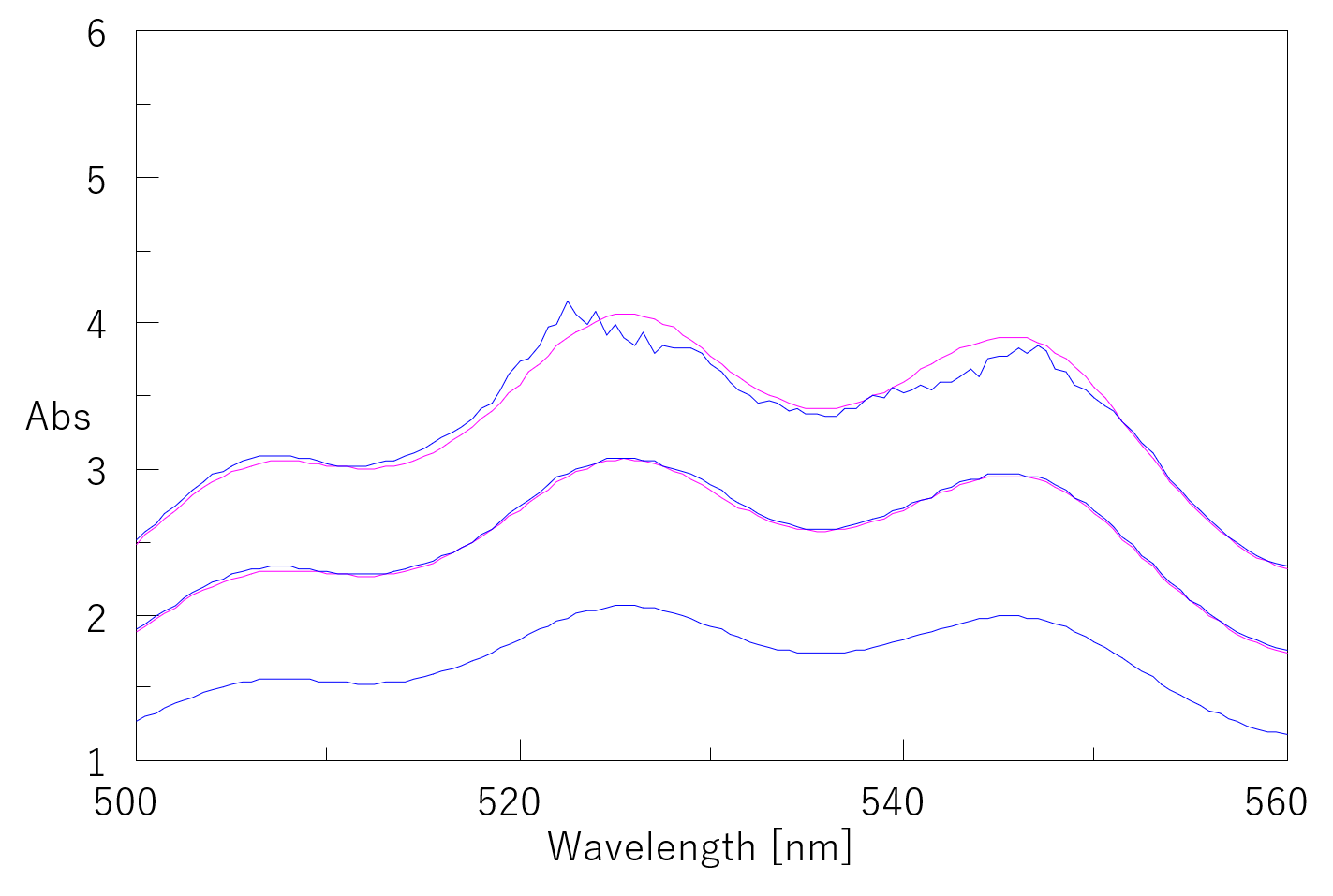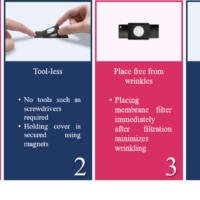Single beam and double beam
In the single-beam configuration, the monochromator, sample, and detector are arranged in series. Although the optical system is simple, it is easily affected by fluctuations in the light source, and a blank measurement is required every time. In the-double beam configuration, monochromatic light is split into two beams by a beam splitter, and the sample and reference are irradiated. Blank correction can therefore be performed automatically and there is no effect of light source fluctuations (Fig. 11).

Fig. 11 Comparison of baseline variations for single-beam and double-beam measurements
Transmission spectrum of pure water
Fig. 12 shows the transmission spectrum obtained by double-beam measurement of pure water. The measurement is performed by first obtaining a baseline spectrum with the sample chamber empty, and then placing a pure water sample in a 10-mm cell on the sample side. The measured spectrum is shown as the blue curve in Fig. 12; the transmittance is low due to absorption and reflection by the cell. However, using the double-beam method with a 10-mm cell on the reference side and a 20-mm cell on the sample side, results equivalent to measurement with an optical path length of 10 mm are obtained (green curve in Fig. 12).
 Fig. 12 Transmission spectrum of pure water
Fig. 12 Transmission spectrum of pure water
Measuring strongly absorbing samples
Using the double-beam method, the reference beam can be attenuated by a neutral density filter with a transmittance of 1% to expand the photometric range. This method is effective for samples having an absorbance of 3 or more. As shown in Fig. 13, measurements can be performed up to higher absorbance values with lower noise than in the case without light attenuation.

Fig. 13 Spectrum of sample with high absorbance
(red: attenuated, blue: non-attenuated)
Related Posts:
 Analysis of Hydrogen Bonding in Pure Water using…
Analysis of Hydrogen Bonding in Pure Water using… Introduction of New and Improved Sample Holder for…
Introduction of New and Improved Sample Holder for… Diffuse Reflection Measurements of Tooth using…
Diffuse Reflection Measurements of Tooth using… Stability Evaluation of Trastuzumab and Rituximab…
Stability Evaluation of Trastuzumab and Rituximab… Comparison of Separation Behavior among Silica-based…
Comparison of Separation Behavior among Silica-based… Combined Analysis of Thermochromic Materials -FT-IR…
Combined Analysis of Thermochromic Materials -FT-IR…
